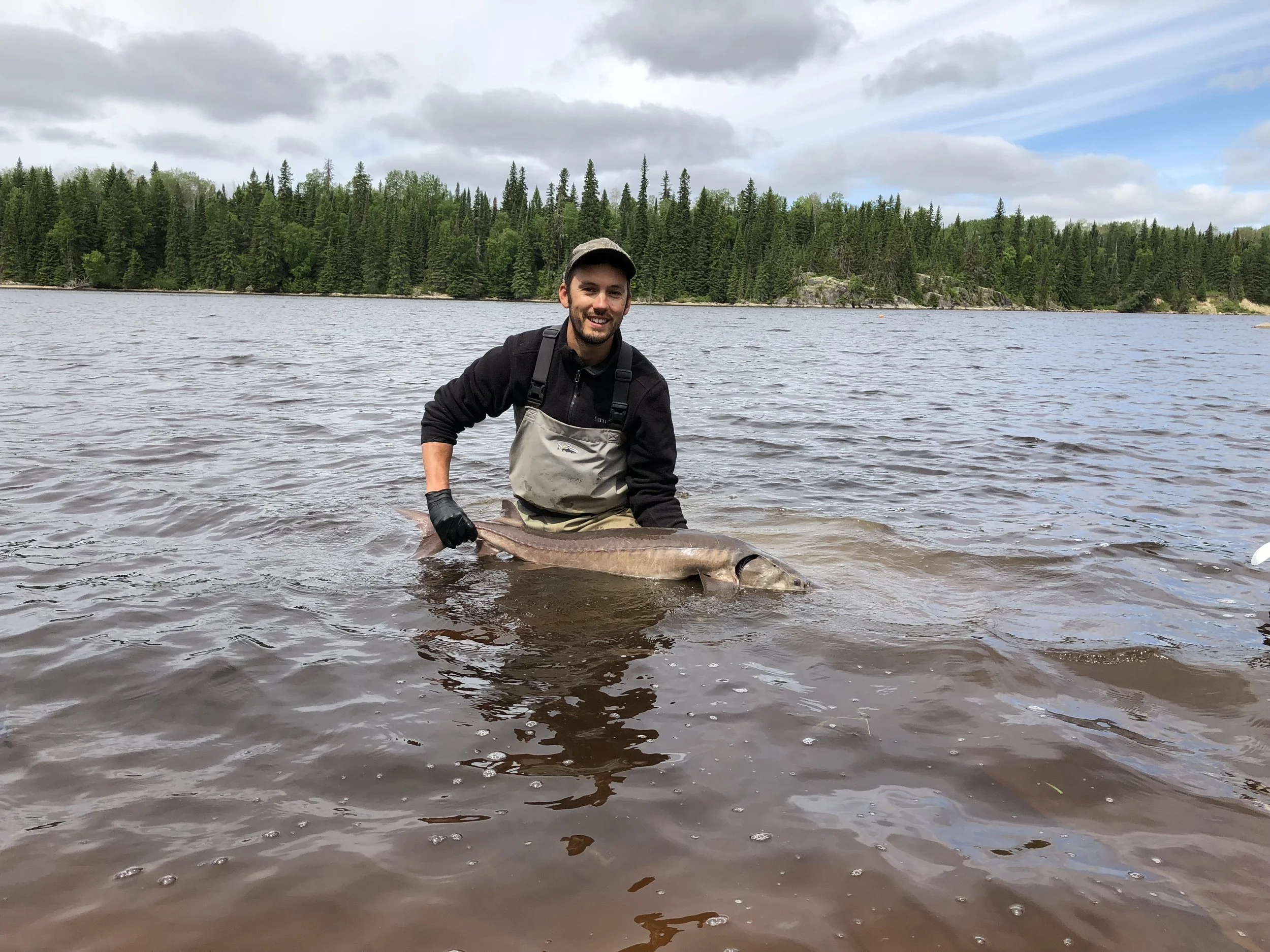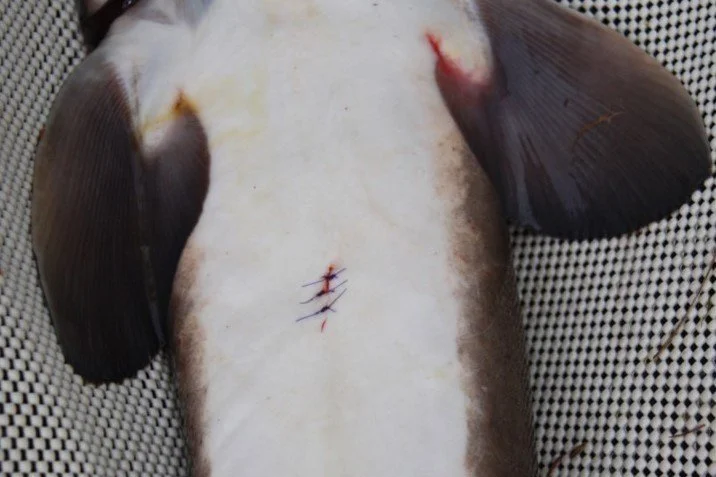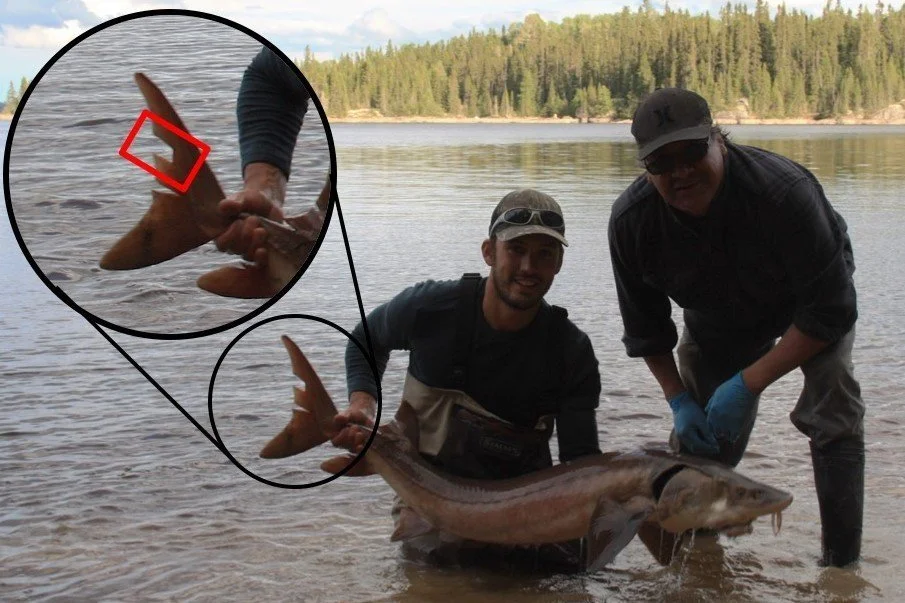
DO YOU FISH FOR LAKE STURGEON?
YOU CAN BORROW A TAG READER AND CONTRIBUTE TO THE RESEARCH
If you go fishing for lake sturgeon, you can contribute to the project by bringing a tag reader with you when you go fishing. This is a small handheld device that lets you scan any fish you catch for a tag. If you find a tagged fish, we would appreciate it if you let us know where you caught it, and considering releasing any tagged fish alive, so that they can keep contributing information to our study.
Tag readers can be picked up at the Lands and Resources office in Moose Factory, and we will compensate fishers for bringing the tag readers with them on their fishing trips.
In the photo to the right, Jacob Seguin (WCS Canada) scans a fish for a tag using a tag reader. Photo credit: Connie O’Connor.
IF you Found a Tag, PLEASE GET IN TOUCH
If you are fishing for lake sturgeon, you might catch a lake sturgeon that is part of our project. You might see a small scar on its belly, or a square piece of fin missing from its tail. If you bring a tag reader with you, you may also find a tag with the tag reader, even if there are no other visible signs on the fish that they are part of our study. If you catch a lake sturgeon with a scar, or a piece of missing fin, or with a tag, please consider releasing the fish so it can continue to be part of the study.
You might also find a tag inside the body of a lake sturgeon while cleaning the fish. If you find a tag, please return the tag to us, so that we can learn more about the fish. We might even be able to use the tag again for a new fish!
A special thank you to Connie O'Connor for the photos below.
This is the belly of a lake sturgeon that has just been implanted with a tag. The stitches dissolve in a few weeks, but it sometimes leaves a small scar. If you catch a lake sturgeon, look for this small scar on the belly, near the fins.
Dan Struthers (WCS Canada) and Larry Rickard (MCFN) release a lake sturgeon with a square ‘fin clip’ in the tail.
Some of the tags are slightly different sizes, but they are all shaped like small black cylinders. All of the tags also have a code written on the bottom.
Dan Struthers (WCS Canada) holds up one of the largest tags that we use for lake sturgeon.
If you found a tag, returning it to us would be very helpful to our research — so we know which fish was caught and where. Often, we can re-use the tag!
Get in touch with us by clicking below to send your tag back to the Learning From Lake Sturgeon project.






